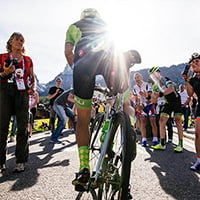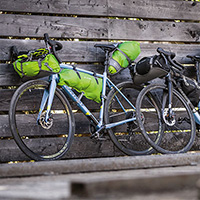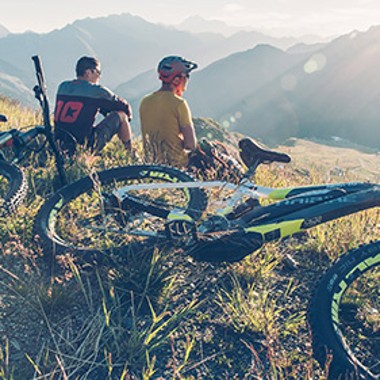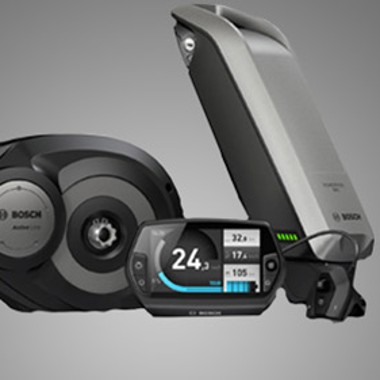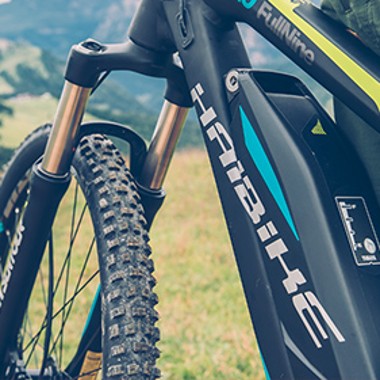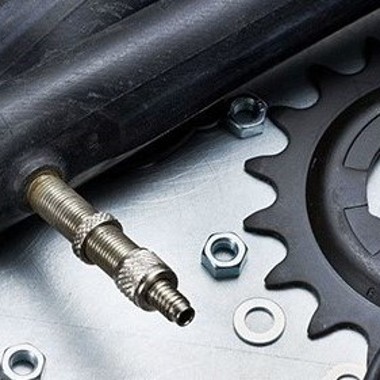E-BIKE GUIDE
EVERYTHING YOU NEED TO KNOW ABOUT ELECTRICALLY ASSISTED CYCLING
If you already have a big grin on your face after pedalling just a few metres on your bike, then you're probably sitting on an e-bike. This is a familiar feeling for many e-bikers and more people are quickly discovering the joys of e-biking. You can spot e-bikers everywhere you go now. The e-mobility revolution has only just begun and many will switch to an e-bike over the coming months and years. You’ll find everything you need to get you up to speed on e-bikes included in this guide.
If you are interested in a bike with an electric motor, it’s important to know which versions are available and which ones are likely to suit you. All e-bike types share some common features and the differences mostly come down to how much power you need.
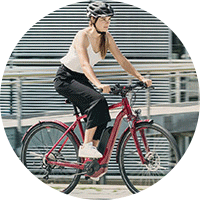
The most popular electric bike is the pedelec (pedal electric cycle). It’s a bike with an electric motor, which only provides support when you pedal yourself. To put it simply, if you don’t pedal, you’re not going to move!
What's a pedelec?
- Electric bikes are known as ‘electrically assisted pedal cycles’ (EAPCs). You don’t need a license, insurance, driver's license or number plate
- Everyone over the age of 14 is allowed to ride a pedelec
- A pedelec only moves when pressure is applied to the pedals
- The motor provides a maximum of 250 watts of power
- It can reach speeds of up to 15mph
- A pedelec is permitted to have a pushing aid that can be used up to a maximum of 15.5 mph
- Riders aren’t obliged to wear a helmet, although it is recommended
- Where possible, pedelecs must stick to designated cycle paths
- Pedelecs are allowed to transport children in trailers
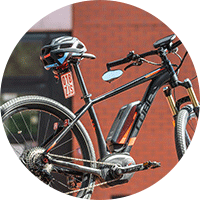
The faster variation of the pedelec is the s-pedelec. The "s" stands for speed, and with speed comes great responsibility.
What is an s-pedelec?
- An s-pedelec is classed as a moped and requires a moped license, insurance and a number plate
- Everyone over the age of 16 is able to apply for a moped license
- An s-pedelec only moves when pressure is applied to the pedals
- The motor provides more than 250 watts of power
- It can reach speeds of up to 28 mph
- A helmet must be worn when riding an s-pedelec
- S-pedelecs aren’t permitted on designated bike paths
- S-pedelecs aren’t allowed to transport children in trailers. Child seats, however, are allowed
E-bikes are naturally a bit heavier than their non-motorised relatives. With this in mind, it’s important to consider the following things:
- It’s important to have strong brakes on the front and rear wheels. Many manufacturers are already using disc brakes for their e-bike models. Hydraulic rim brakes or V-brakes which offer good braking power are recommended as a minimum.
- It’s advisable to use slightly wider tyres or specific e-bike tyres from renowned manufacturers. E-bike tyres are designed to deliver optimum comfort and puncture protection at higher speeds and weight.
- Suspension on the fork, on the rear wheel or even on the seat post isn’t just something fun for mountain bikers to play with. A little extra comfort and increased riding stability on bumpy roads is good for those on speedy E-bikes. Forget the small extra weight that comes with the suspension – it’s more than made up for by the added power of the motor.






























